The following photo essay is by Chinara Majidova, a Baku-based journalist, photographer, and Mehelle contributor who spent the second half of 2016 tracing the new economic activities that have arisen from the demolition of the Sovetski neighborhood. You can read more stories focusing on Sovetski on the Mehelle blog. All pictures were taken by the author.

It has been three years since the Mayor of Baku, Abid Sharifov, ordered the demolition of Sovetski—a historic neighborhood located in the heart of Azerbaijan’s capital city. With roots dating back to the nineteenth century, the residential district once included close to nine thousand buildings, with over two hundred of them registered as cultural heritage monuments. However, as part of the municipality’s 2014 general plan, the built environment of Sovetski has been quickly erased to make room for an extension of Winter Boulevard and an accompanying pedestrian park.
While some residents chose to accept government compensation and move to cheaper or more spacious housing in the city’s periphery, others defied the official decree and remained in the area to fight for their family homes. These last holdouts of Sovetski were often greeted by police notifying them that they only had a few hours to leave before the bulldozers arrived. Many abandoned their old furniture, books, family portraits, and other personal items that can still be found amongst the ruins.
But what happens to amenities and household objects left behind? With the national currency, the Azerbaijani manat, plummeting in value and unemployment on the rise, some resourceful individuals have found a new way to make ends meet by acquiring doors, furniture, windows, bathroom fitment, and fireplace molding and selling them at pop-up bazaars around the city.

Goods can be acquired through two ways; the first method is to contact the homeowners as during the moving process and to directly buy any unwanted goods, while the second method relies on stripping the houses bare only after the residents have left the neighborhood.
Almost every day, dealers go door to door, checking to see which homes are still inhabited. Mehmed, a resident of Sovetski living in a larger building, has seen the process first-hand. “Of course the situation is quite annoying for those who still live here. These buyers approach us and ask, ‘What can we take?’ They are always looking for new things to sell: clothes, old stoves, carpets, flooring, and batteries. Everything that could be sold has already been taken.”
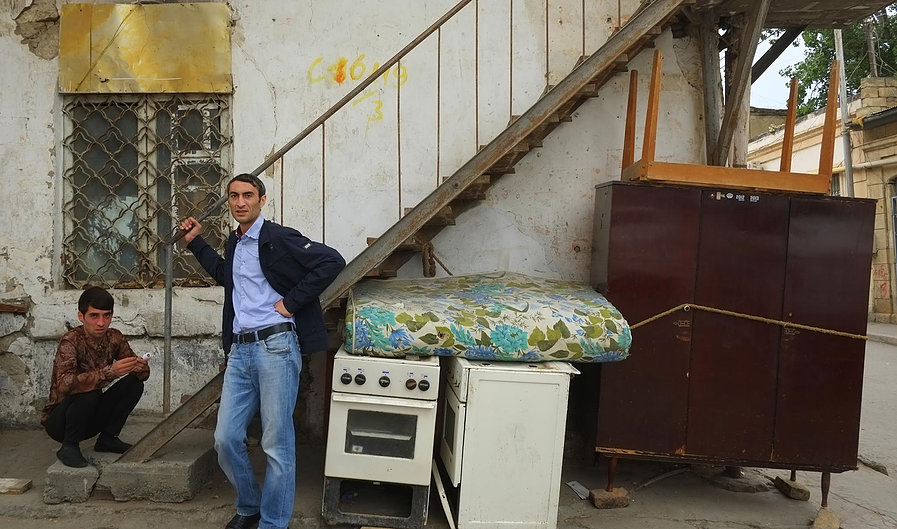

Once all the unanchored items are collected, teams of men come to tear out the wooden floors and ceilings, which are sold as firewood or for construction purposes. In fact, wooden panels are valuable objects, as they could be gathered for free, trucked out to suburbs outside of Baku on the Absheron peninsula, and sold at a decent rate. Mehmed mentions that another popular destination for the wood is Bilgeh, a resort town northeast of Baku that is experiencing a relatively robust construction boom.
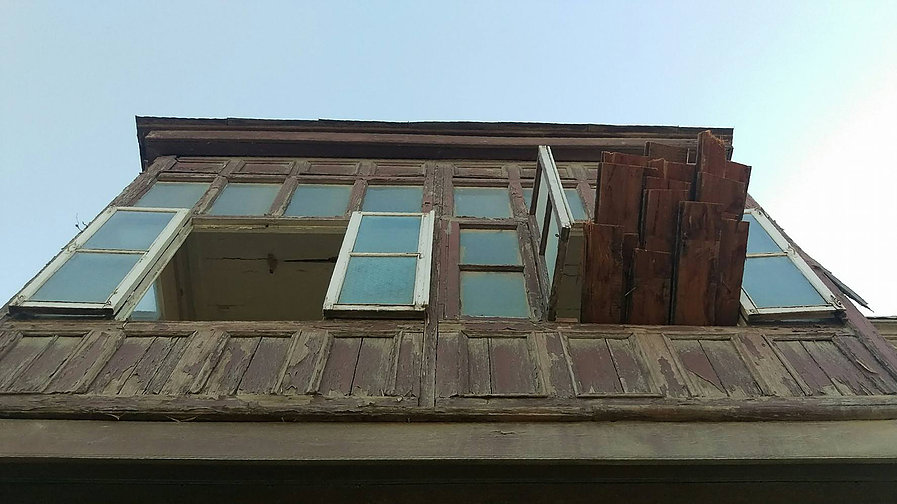
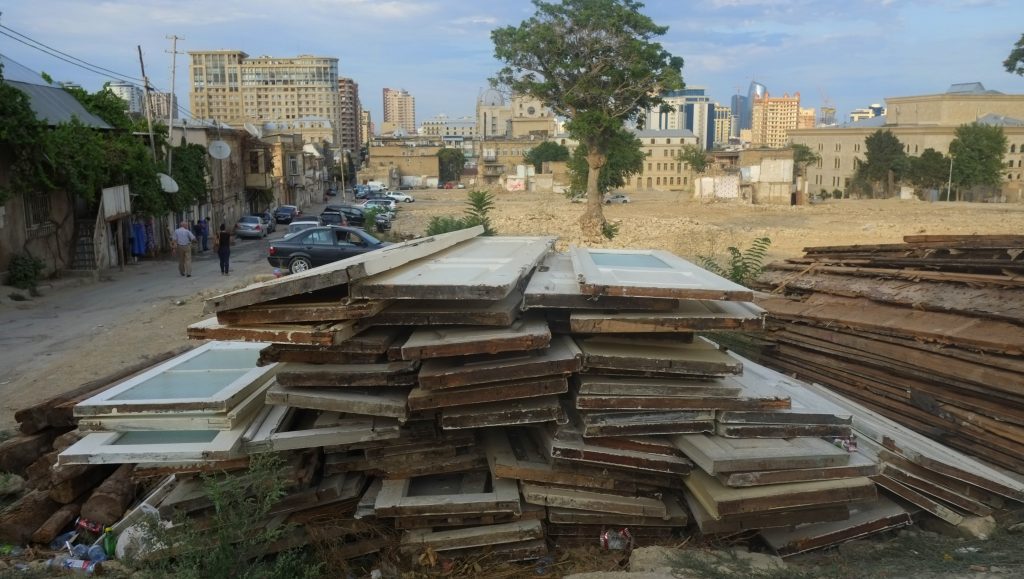
The final items to be salvaged before demolition are the doors, windows, and metal lattices. As the most lucrative items on the market, they are often kept and sold by the homeowners themselves.
Throughout the day, trucks and cars come to empty the houses of their contents. Most of the transporters I met, however, rarely like to discuss their work, as if they felt like circling vultures waiting for the neighborhood to draw its final breath.
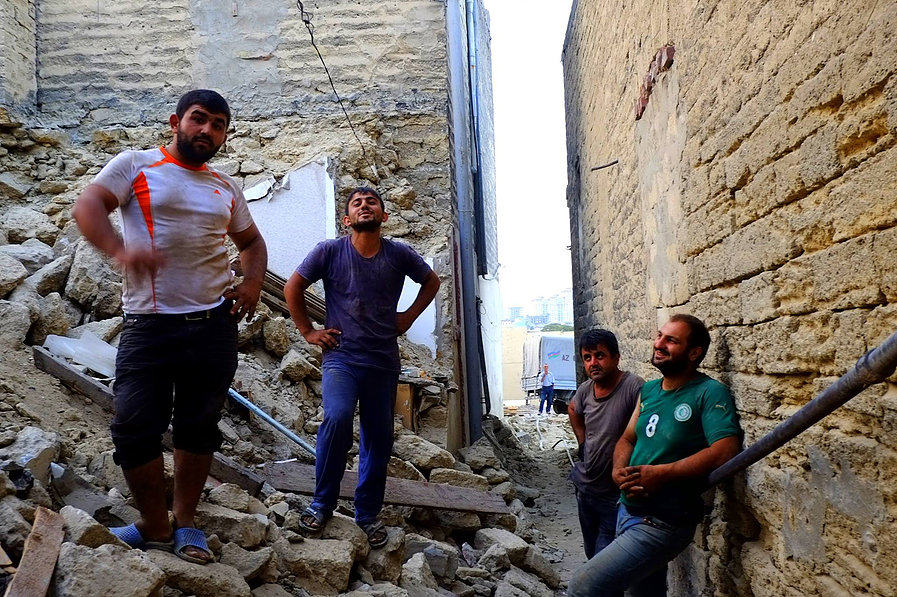
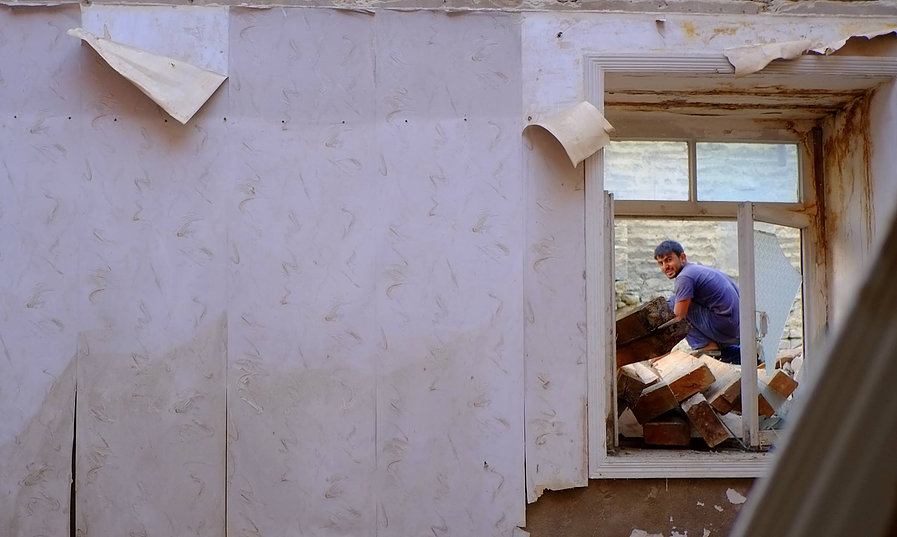
As the demolitions continue, it becomes harder and harder for these workers to tell which houses are empty and which are still occupied. Residents no longer move en masse, but rather on an individual basis; most inhabited buildings appear as if they are empty, while others are even partially demolished. Some larger, multi-storied buildings are entirely empty aside from a single remaining resident.
Over the summer, power in Sovetski was cut. Windows darkened and tensions rose between the remaining residents and workers looking to strip the empty homes. On a few occasions, I witnessed workers stripping a house of its wiring, only to be chased away next door.


During the first few months of this informal economy, much of the buying and selling took place outside of Sovetski. After the business grew, however, sellers started taking over Sovetski’s open spaces—places where houses had been demolished—and started selling right in the center of the neighborhood. At the present moment, there are two places in Sovetski where people are still selling the scavenged objects taken from houses. Due to the fact that these markets are located out in the open, workers work day and night shifts in order to prevent theft of their goods.
An open air market in Sovetski. (This is a 360 video, click and drag on the video with your mouse to change the angle.)
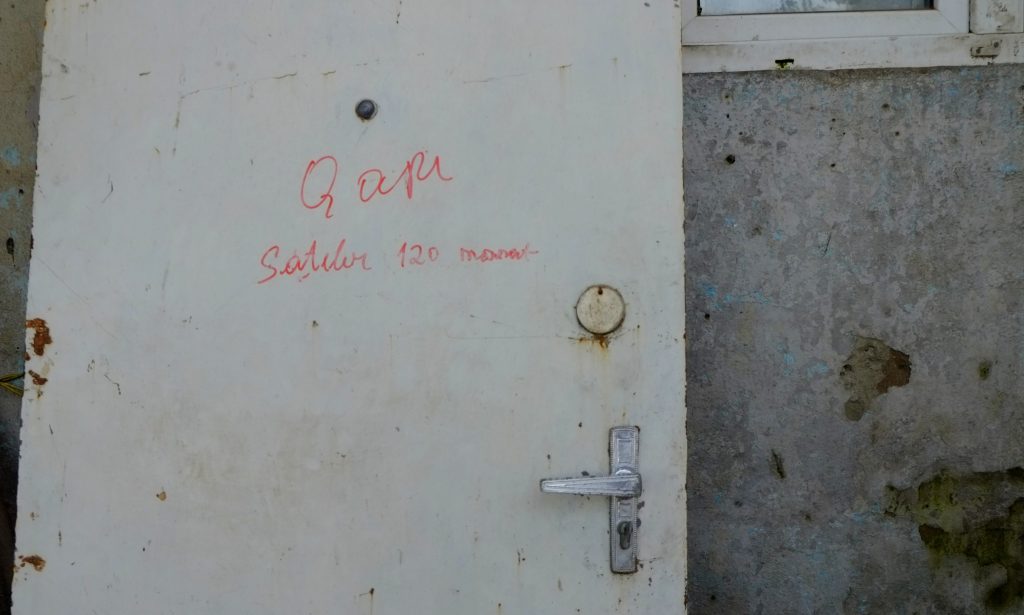
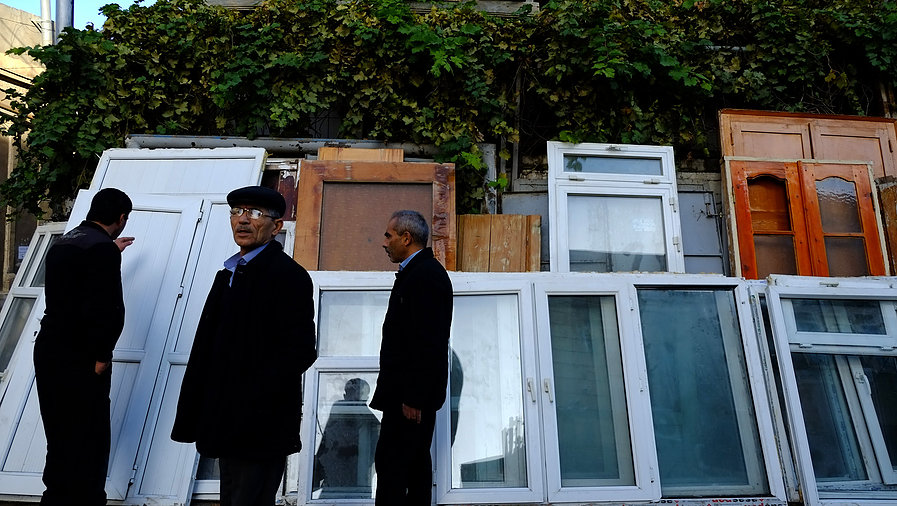
The prices at these markets are more competitive than anywhere else in Baku. I happened to meet a buyer at one such location who was in need of doors and windows for the cold winter months. According to him, the goods were half the cost of a new set, making Sovetski’s open markets a much more economical choice even if one has to arrange their own delivery and installation.


Despite some tensions, most people who still live in Sovetski are not against these markets. As one of the inhabitants said to me, “We are perfectly aware of what’s in store for us; we’ll have to leave sooner or later. At least there’s one more way we can get more money for our property. Plus, it’s additional work for the unemployed.”
It is unclear what will happen to this economic activity over the next few months. As of December 2016, authorities have finally cleared the area for the proposed road and park, but a depleted budget has temporarily halted demolitions, leaving just a few scattered islands of ruins that resemble an eerie, war-torn landscape. It is unclear when the destruction of Sovetski will begin again.
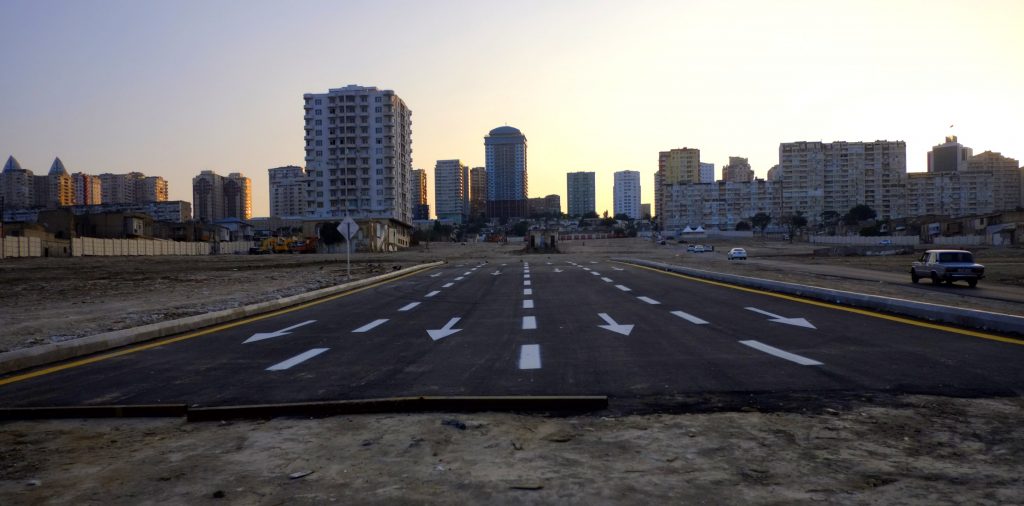












1 comment